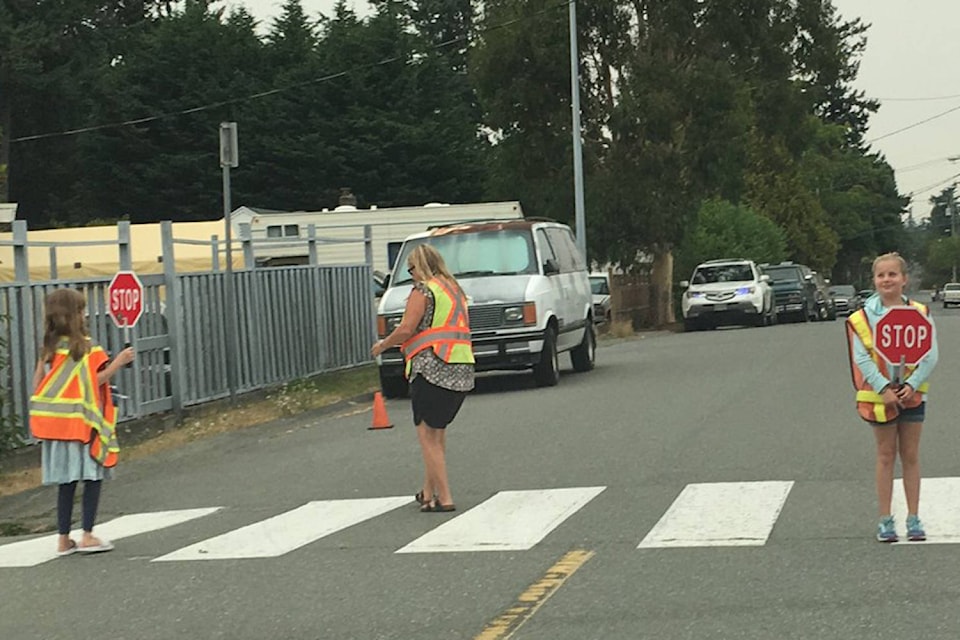While some time may pass before final details become available, Saanich Police spent Tuesday enforcing school zone rules.
“Our [officers] are still out and deployed,” said acting Sgt. Jereme Leslie, reminding drivers about school and playground zone rules.
They allow for a maximum speed of 30 kilometres per hour between 8 a.m. and 5 p.m. on school days unless otherwise posted. The fine for speeding in a school or playground zone ranges between $196 and $253 as well as three penalty points. Drivers who fail to yield to pedestrians or disobey a school guard face fines of $167 and three points. Those who use electronic devices while driving or emailing or texting while driving face a fine of $368 and four points.
Saanich children were among 640,000 students who returned to classroom across British Columbia Tuesday, as a survey raises concerns about the behaviour of parents in school zones.
Driving in school zones has gone from bad to worse, says a survey by the British Columbia Automobile Association.
“We asked over 300 school faculty and staff and over 400 parents or guardians what they’re seeing in their school zones, and it’s very concerning to see that unsafe driving in school zones has increased,” says Shawn Pettipas, BCAA’s director of community engagement. “There’s no excuse for hostile behaviour and breaking traffic rules. Parents and motorists have to start driving safely, we don’t want someone to get hurt.”
Honking or using profanities among parents has jumped almost 30 per cent, according to the School Zone Safety survey. It also revealed more parents and guardians will drive unsafely and ignore traffic rules while dropping off or picking up their children.
More than 80 per cent of survey observers have witnessed parents, who are not following rules of the road, including not stopping at a marked crosswalk (82 per cent) or driving over the speed limit (93 per cent). Distracted driving has also increased and remains high (82 per cent to 86 per cent).
This said, available numbers show that the number of crashes involving children aged five to 18 in school and playground zones has been trending downwards.
In 2010, the Insurance Cooperation of British Columbia recorded 210 crashes in school and playground zones. Those crashes injured 98 children aged five to 18. By 2015, that figure had dropped to 190 crashes and 79 injured children. The five-year average for the period was 170 crashes with 72 injured children. Official ICBC statistics record no fatalities between 2010 and 2015.
Regional figures for Vancouver Island paint a similar picture. The five-year average for the period 2010 through 2015 records 34 crashes, 11 injuries and zero fatalities.
This said, these figures appear incredibly small when held up against the number of trips and the number of British Columbia students.
These figures come with caveats. Since 2008, police are no longer required to attend all crashes as attendance has become discretionary. This reason has contributed to what ICBC calls a “marked decrease” in the number of reports submitted to the Crown corporation.
“We caution that decreasing crash counts which include police-reported data may be misleading,” ICBC said in an explanatory footnote.
And if the numbers are trending down, local police are trying to make sure that they remain so. In fact, some Saanich drivers will likely remember the return of school as a costly occasion, including demerit points.



